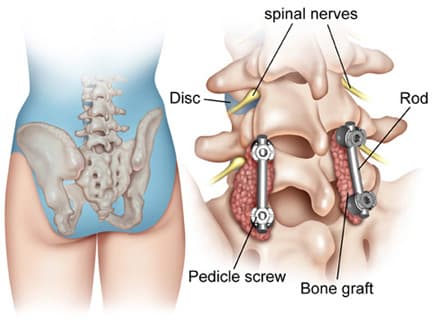During a TLIF, the surgeon makes a single midline incision (open) or two small incisions off midline (minimally invasive). With this approach, you can avoid excessive nerve retraction by accessing the disc space through the foramen. Additionally, there is less muscle dissection that a traditional posterior fusion requires. The surgeon removes a portion of the facet joint and the damaged disc, then inserts a cage filled with bone graft material into the disc space. This restores the proper height between the vertebrae and takes pressure off the nerves. Screws and rods are then used to stabilize the spine while the vertebrae above and below fuse together over the ensuing several months.

Transforaminal Interbody Fusion
Transforaminal lumbar interbody fusion (TLIF) is a type of spinal fusion for the lumbar spine. The term 'transforaminal' means through the foramen, referring to the small bony openings where the nerves exit the spine. This surgical approach accesses the spine from the back, but at a slight angle to one side. This can be performed with a midline or minimally invasive approach.